9 Fascinating Owl Species
By: Priyanka Maheshwari Wed, 20 Sept 2023 12:43:45
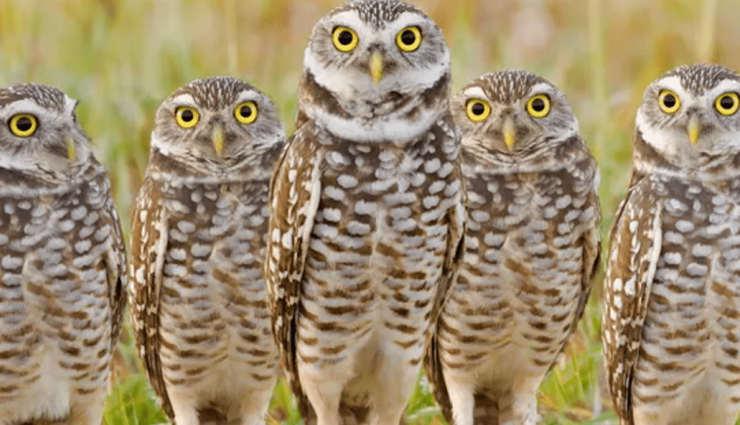
Owls, with their captivating nocturnal presence and intriguing adaptations, have long held a special place in the hearts and minds of humans. These enigmatic birds of prey possess a remarkable combination of stealth, beauty, and mystique that has fueled our fascination for centuries. From the haunting hoots of the great horned owl echoing through the night to the iconic appearance of the snowy owl, owls have left an indelible mark on folklore, literature, and the natural world.
In this exploration, we embark on a journey to discover some of the most fascinating owl species that grace our planet. These remarkable birds come in various shapes, sizes, and colors, each uniquely suited to its environment and hunting preferences. Join us as we unveil the secrets of these nocturnal hunters, delving into their diverse habitats, behaviors, and the intriguing adaptations that make them a source of both scientific wonder and timeless fascination.
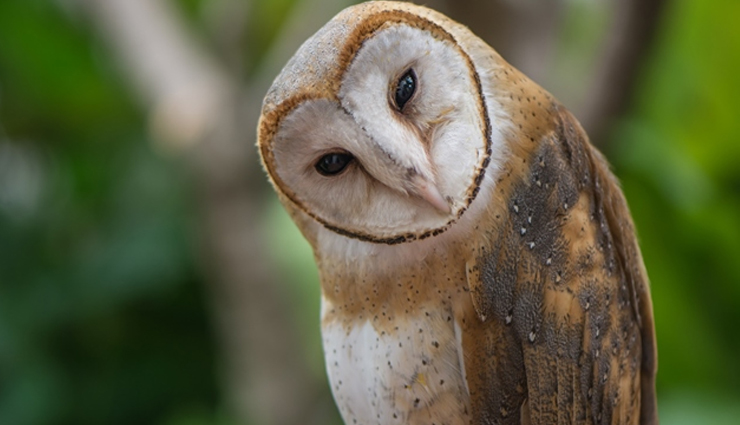
# Barn Owl (Tyto alba)
The Barn Owl (Tyto alba) is a striking and distinctive nocturnal bird of prey known for its heart-shaped facial disc, large dark eyes, and pale plumage. It is found on nearly every continent, excluding Antarctica, and is adaptable to various habitats, with a preference for rural areas like barns and abandoned buildings.
Barn owls are highly skilled hunters with exceptional hearing and silent flight capabilities. They primarily prey on small mammals, particularly rodents, and rely on their keen sense of hearing to locate prey in complete darkness.
These owls nest in cavities, using natural hollows in trees or man-made structures. They are known for their unique calls and have cultural significance in various societies, from symbols of doom to representations of wisdom and protection.
While barn owls are not globally threatened, some regional populations face challenges due to habitat loss and pesticide impacts on their prey. Conservation efforts, including nest box provision, aim to support these remarkable birds. The Barn Owl continues to inspire wonder and admiration, serving as a symbol of nature's beauty and mystery.

# Great Horned Owl (Bubo virginianus)
The Great Horned Owl (Bubo virginianus) is a magnificent and formidable bird of prey characterized by its large size, distinctive "horns" or tufts of feathers on its head, and powerful talons. It is one of North America's largest owls and is renowned for its hunting abilities.
Great Horned Owls are versatile predators, capable of capturing a wide range of prey, including mammals, birds, and even other owls. Their robust build and keen eyesight make them effective nocturnal hunters.
These owls are found throughout North and South America, inhabiting diverse ecosystems such as forests, deserts, and urban areas. They are known for their haunting hoots and calls, which vary in pitch and intensity.
Great Horned Owls build their nests in a variety of locations, including trees, cliffs, and even the abandoned nests of other large birds. They are dedicated parents, often nesting during the winter months.
This species plays a crucial role in maintaining ecological balance by controlling rodent populations and serving as apex predators in their respective habitats. While not globally threatened, Great Horned Owls, like many birds of prey, face challenges related to habitat loss and human activities.
Overall, the Great Horned Owl is a symbol of strength and adaptability in the natural world, admired for its majestic appearance and role as a top predator in its ecosystems.
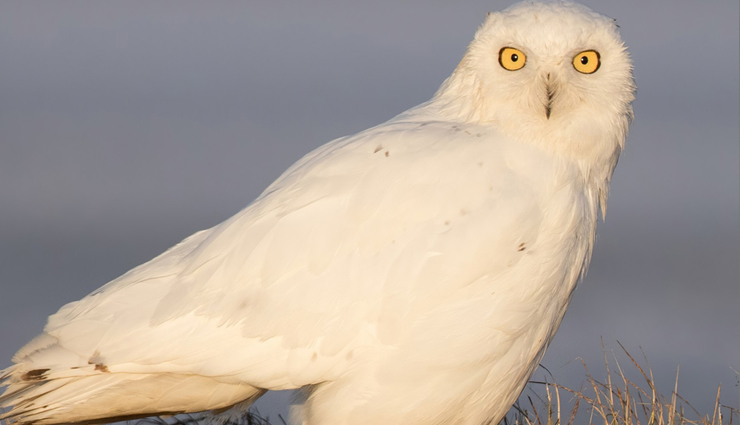
# Snowy Owl (Bubo scandiacus)
The Snowy Owl (Bubo scandiacus) is an iconic and majestic owl species native to the Arctic tundra regions of North America and Eurasia. It is renowned for its striking appearance, characterized by pure white plumage that camouflages it against the snowy landscapes of its habitat.
Snowy Owls are among the largest owls in the world, with distinctive round faces, piercing yellow eyes, and feathered feet. Their large size and keen eyesight make them formidable hunters, primarily preying on lemmings and other small mammals.
These owls are well adapted to the extreme cold of the Arctic and subarctic regions, where they endure harsh winters. Their thick plumage and feathered feet provide insulation against the cold, and they are known for their ability to thrive in low-light conditions.
Snowy Owls are nomadic in nature, and their migrations are influenced by the availability of food. During irruption years, when food sources are scarce in their breeding grounds, they may venture southward in search of sustenance.
These owls have captured the popular imagination, partly due to their association with the fictional character Hedwig in the Harry Potter series. They are also significant in indigenous cultures and are often considered symbols of wisdom and the Arctic wilderness.
While Snowy Owls are not considered globally threatened, they do face some challenges related to climate change, which can affect their breeding and prey availability. Conservation efforts aim to monitor and protect these magnificent birds, ensuring they continue to enchant and inspire admiration as symbols of the frozen North.
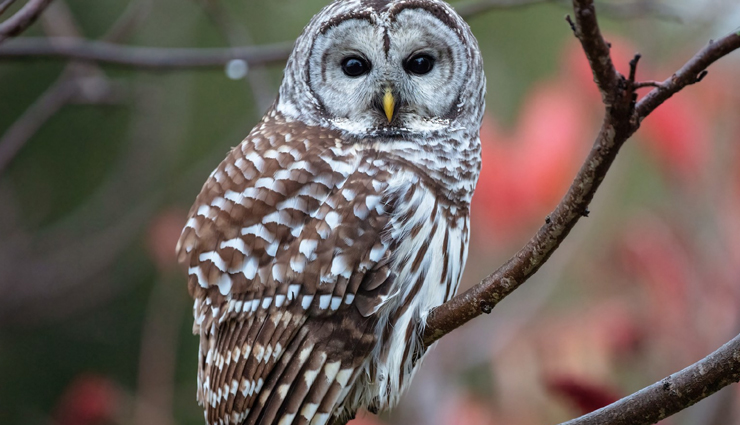
# Barred Owl (Strix varia)
The Barred Owl (Strix varia) is a distinctive and widespread owl species native to North America. Known for its striking appearance and distinctive hooting calls, it is a bird of prey that has adapted well to various woodland habitats.
Barred Owls are recognized by their large size, rounded facial disc, and distinctive vertical barring on their chests, which gives them their name. They have large, dark eyes and a prominent beak. These owls primarily feed on small mammals, birds, and amphibians, and they hunt both during the day and at night.
These birds inhabit mature forests, swamps, and wooded areas, often near water sources. They are known for their haunting hoots, often described as "Who cooks for you? Who cooks for you all?" Their calls are a common sound in eastern North American woodlands.
Barred Owls are cavity nesters and may use abandoned nests of other large birds or tree hollows. They are dedicated parents and can be fiercely protective of their nests and young.
While not considered globally threatened, Barred Owls, like many owl species, face challenges related to habitat loss and urbanization. Their adaptability and ability to coexist with humans make them a relatively common sight in many parts of their range.
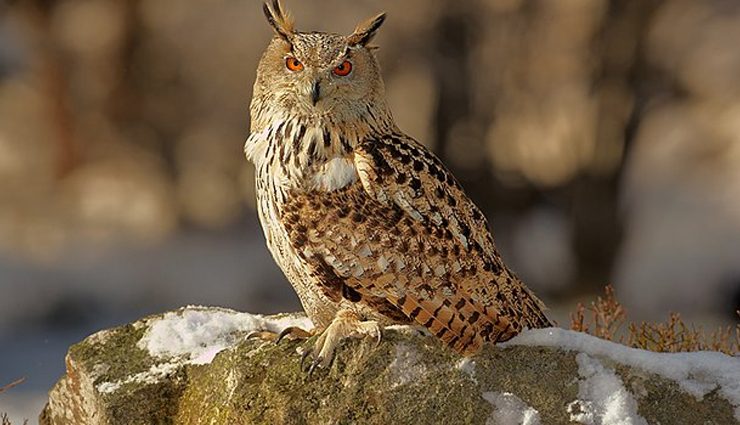
# Eagle Owl (Bubo genus)
The Eagle Owl, belonging to the Bubo genus, is one of the most formidable and imposing owl species in the world. Known for its exceptional size, powerful talons, and striking appearance, these owls are renowned apex predators in their ecosystems.
Eagle Owls are characterized by their robust build, large tufts of feathers on their heads resembling "horns," and piercing orange or yellow eyes. They are among the largest owls globally, with wingspans that can exceed six feet. These impressive physical attributes make them formidable hunters, capable of taking down a wide variety of prey, including mammals, birds, and even other owls.
These owls are found in diverse habitats, ranging from dense forests to rocky cliffs and mountainous regions. They are adaptable and have a global presence, with various subspecies distributed across Europe, Asia, Africa, and the Americas.
Eagle Owls are known for their haunting calls, which can include deep hoots and resonant screeches. Their vocalizations are often associated with their presence in their habitats.
Despite their imposing size, Eagle Owls are skilled in the art of silent flight, which enables them to approach their prey stealthily. They are known for their dedication to their nests, often reusing nests of other large birds or utilizing rocky crevices for nesting sites.
While these owls are not considered globally threatened, they face challenges such as habitat loss and human disturbance. Conservation efforts aim to protect these magnificent birds and the ecosystems they inhabit.
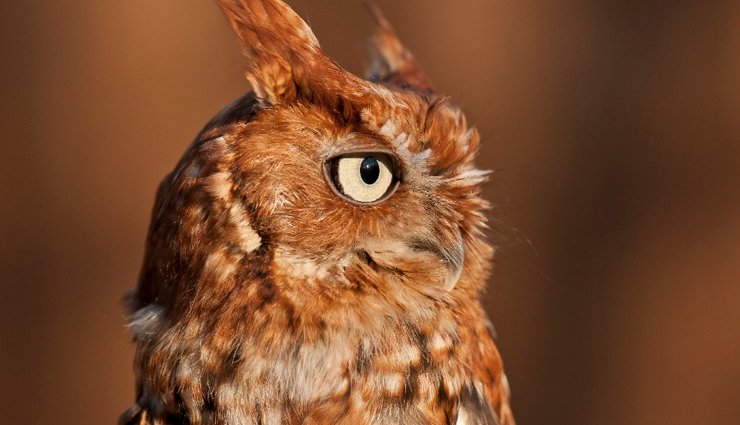
# Eastern Screech Owl (Otus asio)
The Eastern Screech Owl (Otus asio) is a small but captivating owl species native to North and Central America. Despite its diminutive size, this owl is a remarkable and adaptable predator known for its unique trilling calls.
Eastern Screech Owls come in two primary color morphs: red and gray. They are characterized by their small stature, feather tufts, and piercing yellow eyes. These owls have a wide distribution, inhabiting a range of environments, from woodlands and forests to urban parks and gardens.
Their hunting abilities are impressive, primarily targeting small mammals, birds, and insects. Eastern Screech Owls are skilled in silent flight, allowing them to approach prey without detection. Their calls, which include trills and whinnies, are often heard in their territories and play a crucial role in communication and territorial defense.
These owls are cavity nesters, utilizing tree hollows, nest boxes, or even abandoned woodpecker holes as nesting sites. They are dedicated parents, fiercely protecting their nests and young.
Eastern Screech Owls have adapted well to human-modified landscapes and can be found in suburban and urban areas. Their presence often goes unnoticed due to their nocturnal habits, but their distinctive calls are an integral part of the nighttime soundscape.
While not considered globally threatened, Eastern Screech Owls face challenges related to habitat loss and urbanization. Conservation efforts include the provision of nest boxes to support their populations.
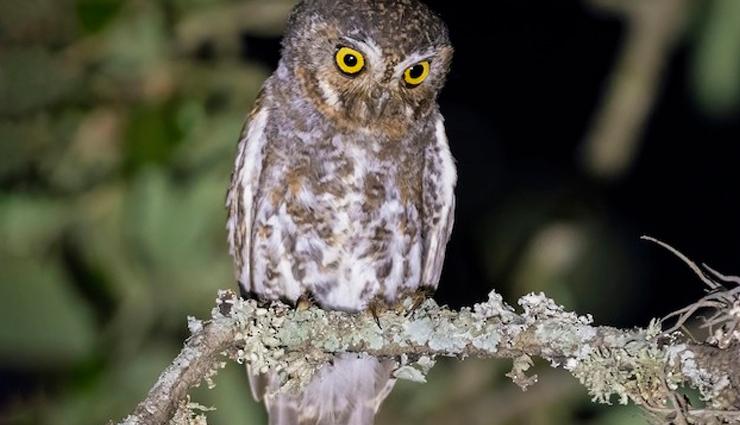
# Elf Owl (Micrathene genus)
The Elf Owl, belonging to the Micrathene genus, is one of the tiniest and most endearing owl species in the world. Despite its small stature, this owl possesses remarkable characteristics that have earned it a special place in the hearts of nature enthusiasts.
Elf Owls are known for their diminutive size, measuring just around 5 to 6 inches in length. They have large, expressive eyes and a distinctive appearance, with feather tufts on their heads and a mottled grayish-brown plumage. These owls inhabit the arid regions of the southwestern United States and Mexico.
These owls are primarily insectivorous, preying on a variety of insects, including moths and beetles, which they capture in flight. Their hunting behavior is agile and acrobatic.
Elf Owls are cavity nesters and often utilize woodpecker holes or other natural crevices as nesting sites. They are known for their charming trilling calls, which are often heard during the breeding season and serve as a means of communication.
Despite their tiny size, Elf Owls are highly adapted to desert life and have the ability to lower their body temperature during hot days to conserve energy.
While not considered globally threatened, Elf Owls face habitat challenges due to urbanization and habitat degradation in some regions. Conservation efforts aim to protect the desert ecosystems they call home.
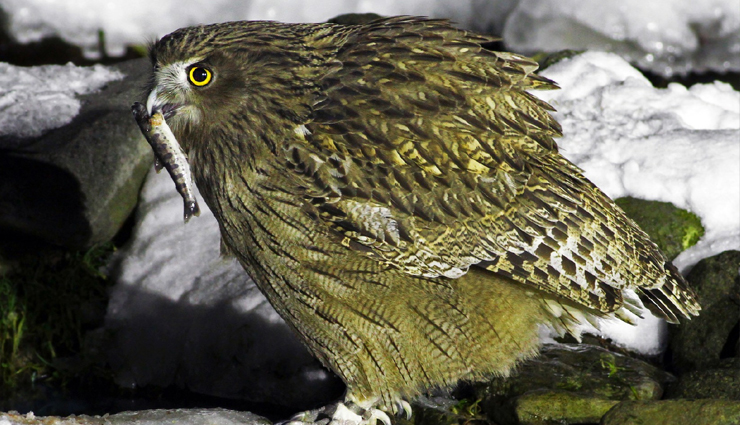
# Blakiston's Fish Owl (Ketupa blakistoni)
Blakiston's Fish Owl (Ketupa blakistoni) is a majestic and endangered owl species native to the dense, remote forests of East Asia. Recognized for its immense size, impressive plumage, and unique habitat preferences, it is one of the rarest and most elusive owls in the world.
These owls are among the largest owl species, with wingspans that can exceed six feet and a weight that rivals many raptors. They are characterized by their powerful talons, massive beaks, and striking orange-yellow eyes. Their plumage is a rich, dark brown, providing excellent camouflage in their forested habitats.
Blakiston's Fish Owls are specialized hunters of fish and other aquatic prey, favoring habitats near rivers, lakes, and wetlands. They are equipped with strong, curved talons and large, sharp beaks to capture and consume their slippery quarry.
Their remote and dense forest habitats, often along pristine rivers, make them challenging to study and observe. They are primarily solitary birds and are known for their low-pitched hooting calls, which resonate through the forests during their nocturnal hunts.
These owls have faced significant habitat loss and degradation due to deforestation and human activities in their range, making them highly endangered. Conservation efforts are focused on protecting their critical habitats and raising awareness about the importance of preserving these unique birds and their ecosystems.
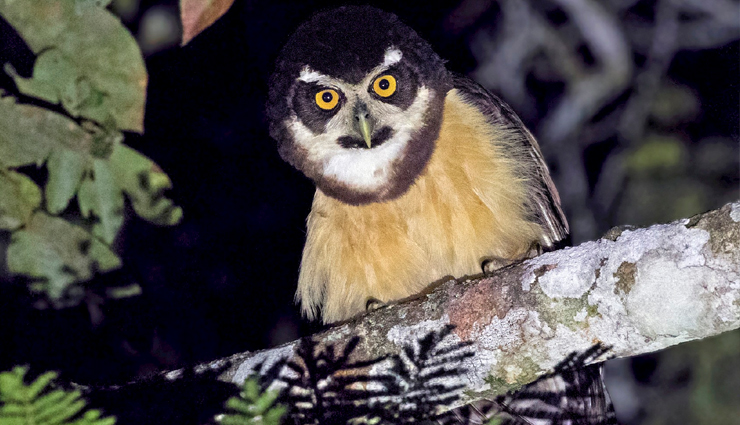
# Spectacled Owl (Pulsatrix perspicillata)
The Spectacled Owl (Pulsatrix perspicillata) is a captivating and distinctive owl species native to the lush tropical forests of Central and South America. Known for its striking appearance and unique facial pattern, it is a fascinating member of the owl family.
These owls are recognized by the striking facial markings that resemble "spectacles" or glasses, giving them their name. Their large size, dark plumage, and conspicuous yellow eyes contribute to their distinctive appearance.
Spectacled Owls primarily inhabit dense tropical forests, where they are often found perched high in the canopy. They are skilled predators, preying on a variety of birds, mammals, and amphibians. Their hunting techniques are stealthy and agile, allowing them to capture prey in the dense foliage.
These owls are generally solitary and have a low-pitched hooting call that resonates through the forest canopy during the night. They are known for their reserved and elusive behavior, making them challenging to study in their natural habitat.
While not considered globally threatened, Spectacled Owls, like many owl species, face habitat loss due to deforestation and human activities in some regions of their range. Conservation efforts aim to protect their tropical forest habitats and raise awareness about the importance of preserving these unique birds and their ecosystems.





